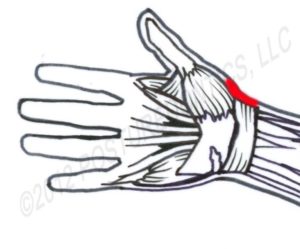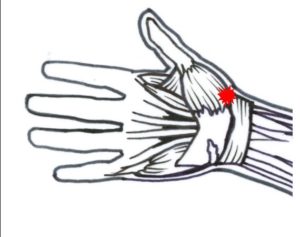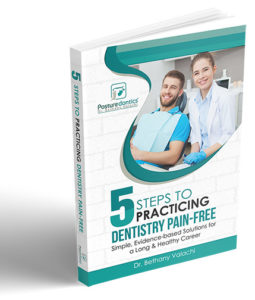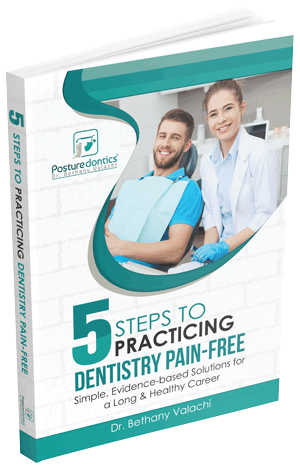-Dr. Bethany Valachi-
In dentistry, two of the most commonly reported pain syndromes of the wrist occur in nearly the same area. Easily confused, but of entirely different origin, deQuervain’s disease is a painful inflammation of the tendons in the thumb, whereas osteoarthritis (OA) of the thumb is a degenerative joint process. Both appear frequently among dental professionals, since a primary risk factor is repetitive thumb use. These syndromes can be debilitating, and OA of the thumb can force early retirement, especially among dental hygienists. Therefore it is a good investment in your health to implement early ergonomic prevention strategies.
de Quervain’s Disease (also known as de Quervain’s Tenosynovitis) affects two thumb

tendons that move the thumb forward and away from the hand at the CMC joint, between the base of the thumb and the wrist. Symptoms include pain, tenderness and swelling on the thumb side of the wrist. Oftentimes gripping is difficult, and movement of the thumb worsens the pain. While the name implies a tendonitis, the newest research reveals that it is more likely a thickening and degeneration of the tendon synovial membrane.
In dentistry, this is most often due to forceful, sustained or repetitive
thumb abduction (flexed forward, out of the plane of the hand) combined with angling the hand sharply to one side. Scaling, extractions, suctioning with a palmar grip are a few examples of tasks in dentistry that can lead to the problem. Women are 4 times more prone to develop this problem than men, and frequency is highest in team members 35-55 years of age.
Osteoarthritis of the CMC Joint of the Thumb
Osteoarthritis (OA) is the most common joint disease and a major cause of disability in the US. Similar to muscles and spinal discs, your joints also require movement to receive nourishment and remain healthy. Whereas medium to high levels of activity do not cause OA, studies show that abnormal static loading and immobilitation leads to the syndrome. Also, joint forces are greatest in the hands during precision handgrip. It is easy to see why dental hygienists are most prone to disability due to this syndrome.

Symptoms include pain and aching at the base of the thumb (Fig 3), which worsens with pinch grip. The area is tender when pressed upon and can be stiff in the morning. These symptoms are worsened with pinching and twisting. At the thumb CMC joint, the primary stabilizing ligament (the beak ligament) becomes tight when you pronate your forearm (palms-down) and assume a lateral pinch grip. When this ligament becomes weakened, the CMC joint moves improperly and joint damage can occur. The syndrome is most prevalent in women over 40 years old.
The symptoms are very similar to de Quervain’s disease, but intervention is quite different. Therefore, it is imperative that specific diagnostic tests be performed. In
with you.
Read the entire article & all interventions
CLICK HERE
©2009 Posturedontics, LLC . All rights reserved

 How can you protect your back, neck, shoulders, and hands for a long and healthy career?
How can you protect your back, neck, shoulders, and hands for a long and healthy career?

